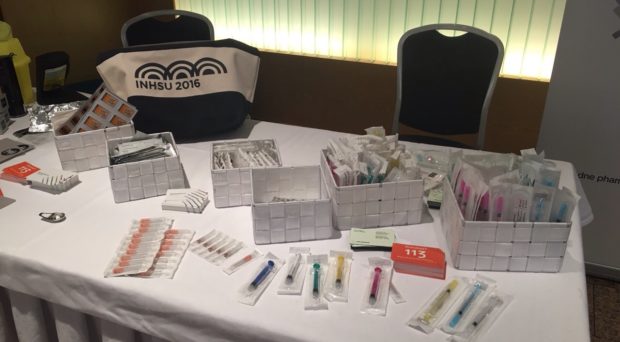
The 5th International Symposium on Hepatitis Care in Substance Users (INHSU 2016) is in full swing here in Oslo, Norway, and it’s great to be a part of it. In a short span of time, this meeting has quickly risen into the top tier of recurring global hepatology conferences. Lots of research issues are being discussed in these three days of sessions (7th–9th September) from harm reduction strategies, to addressing treatment barriers and adherence, to hepatitis C vaccine development.
Those in the liver community have such a wealth of knowledge from decades of research – now is the time to work together to apply it
Many of the sessions in the programme reflect research priorities arising in the wake of the massive call to action that has echoed around the globe this year. Those in the liver community have such a wealth of knowledge from decades of research – now is the time to work together to apply it in the context of powerful new biomedical tools and increasing political commitment.
This meeting is part of a renewed look at hepatitis care, with the patient at the center of the picture. For example, the European Monitoring Centre for Drugs and Drug Addiction (EMCDDA) Insights Series just put out an incredibly timely publication on hepatitis C among drug users in Europe, highlighting key points relating to treatment as prevention. The review also brings together a wealth of knowledge from experts who address the epidemiology, treatment and prevention of hepatitis C among people who inject drugs (PWID) across Europe, where we are eagerly awaiting the approval of the first European Action Plan on Hepatitis next week.
The sessions at INHSU 2016 are all important pillars of the hepatitis continuum of care
The sessions at INHSU 2016 are all important pillars of the hepatitis continuum of care , with their comprehensive analysis of epidemiology, harm reduction, prevention, treatment, living with the disease, and policy. We absolutely need this broad focus in order to build a successful hepatitis elimination movement!
On an individual level, I am finding INHSU to be an invigorating way to explore synergies between my own work and other conference delegates’ activities, especially in relation to my research group’s Hep-NORDIC study, for which data collection will begin next month.
Hep-NORDIC is a multi-stakeholder examination of key hepatitis prevention and treatment policies and services in the Nordic countries. By surveying patient groups, drug user groups, ministries of health, and medical societies, we hope to provide new insights into national responses to hepatitis in the Nordic countries – including responses to the needs of PWID, who constitute a heavily affected population in this region.
Being in Oslo for INHSU is requiring me and other members of the liver community to actively consider the human toll of viral hepatitis on people who inject drugs. I feel fortunate to be able to contribute alongside so many talented peers who are using science to reduce the suffering of a group of people who are too often denied the dignity and respect that all of us deserve.
I look forward to the remainder of the Symposium, and to more dynamic discussions about how we can achieve maximum impact in addressing hepatitis among those who inject drugs in Europe and beyond.
Other links:
Hepatology, Medicine and Policy is now accepting submissions on this and related issues. For more information, visit: www.hmap.biomedcentral.com.
Comments